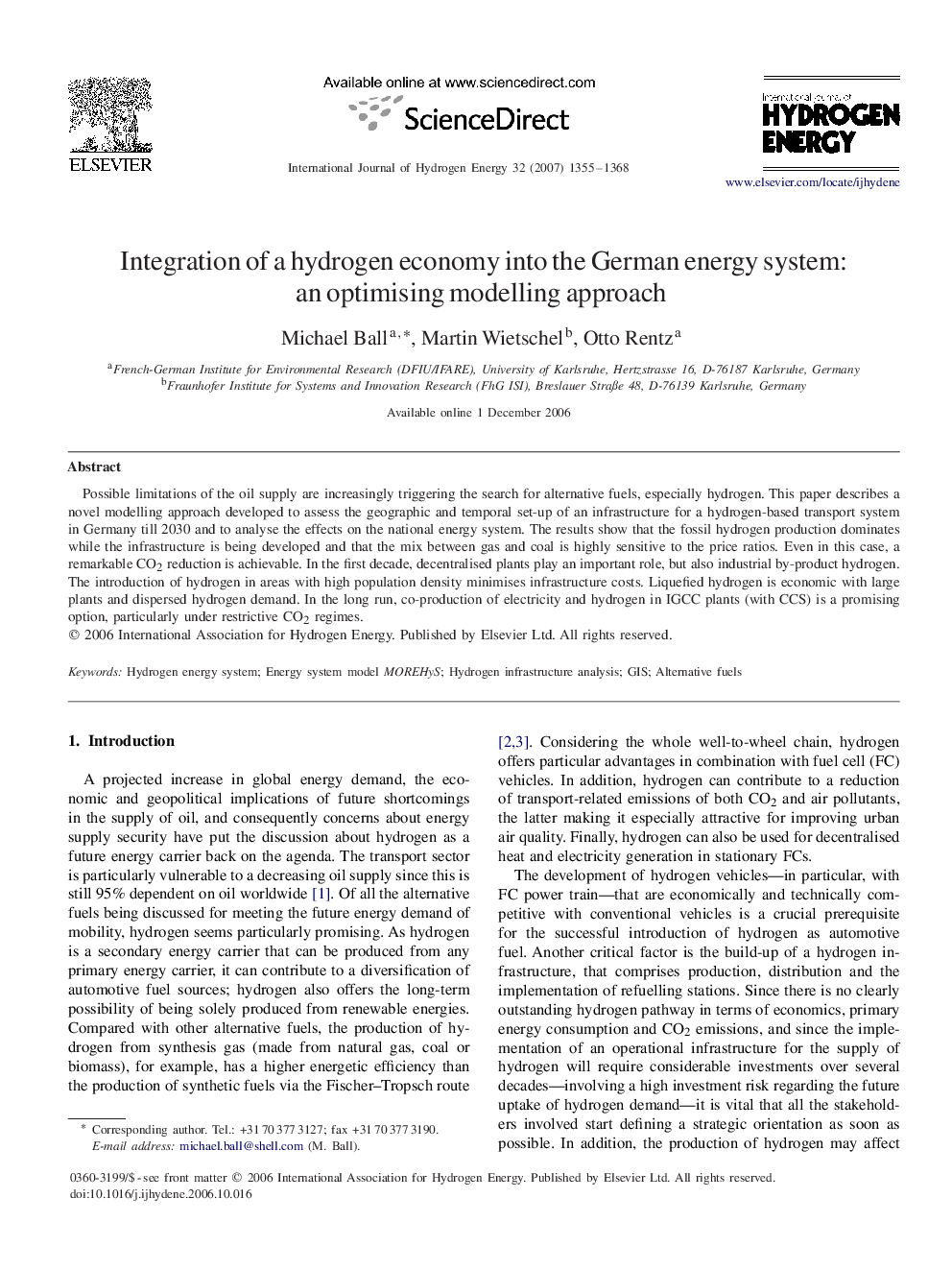| Article ID | Journal | Published Year | Pages | File Type |
|---|---|---|---|---|
| 1280475 | International Journal of Hydrogen Energy | 2007 | 14 Pages |
Possible limitations of the oil supply are increasingly triggering the search for alternative fuels, especially hydrogen. This paper describes a novel modelling approach developed to assess the geographic and temporal set-up of an infrastructure for a hydrogen-based transport system in Germany till 2030 and to analyse the effects on the national energy system. The results show that the fossil hydrogen production dominates while the infrastructure is being developed and that the mix between gas and coal is highly sensitive to the price ratios. Even in this case, a remarkable CO2 reduction is achievable. In the first decade, decentralised plants play an important role, but also industrial by-product hydrogen. The introduction of hydrogen in areas with high population density minimises infrastructure costs. Liquefied hydrogen is economic with large plants and dispersed hydrogen demand. In the long run, co-production of electricity and hydrogen in IGCC plants (with CCS) is a promising option, particularly under restrictive CO2 regimes
